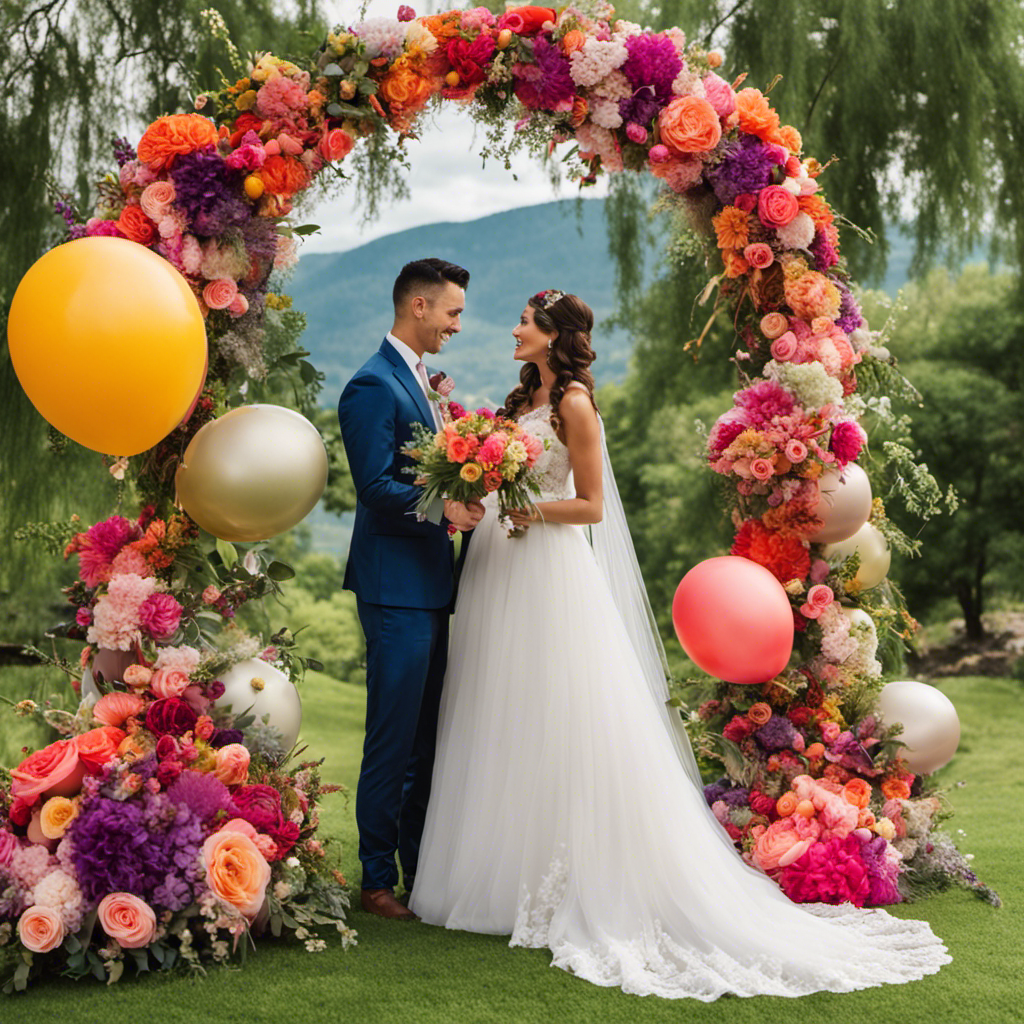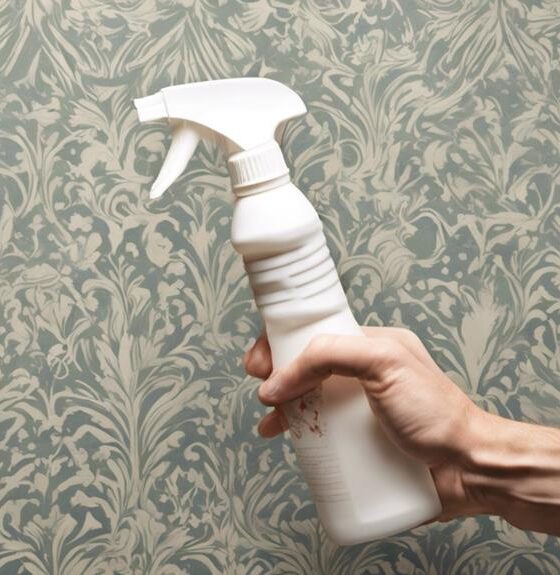Retreat
Where Should I Go for a Spa Retreat in Southeast Asia

Are you in need of a rejuvenating getaway? Look no further than Southeast Asia, where we’ve gathered the best spa retreat destinations just for you.
From the tranquil beaches of Bali, Indonesia to the lush jungles of Koh Samui, Thailand, there’s a haven of relaxation waiting to pamper your senses.
Indulge in ancient Cambodian healing traditions in Siem Reap, or soak up the serenity of Langkawi, Malaysia.
Unwind in the charming town of Hoi An, Vietnam, or discover bliss on Bintan Island, Indonesia.
Your ultimate spa retreat awaits!
Key Takeaways
- Bali offers a unique spa experience combining luxury and traditional Balinese rituals.
- Koh Samui is known for its luxurious beachfront resorts and famous wellness retreats.
- Siem Reap offers luxurious spa retreats deeply rooted in Cambodian culture.
- Langkawi offers a multitude of luxurious spa resorts providing a serene escape.
Bali, Indonesia
We can’t wait to check out the luxurious spa resorts in Bali, Indonesia. Known for its stunning beaches and rich cultural heritage, Bali offers a unique spa experience that combines luxury and traditional Balinese rituals.
Picture yourself being pampered in a serene beachfront resort, with the sound of the waves lulling you into a state of deep relaxation. Bali is renowned for its spa treatments, which draw inspiration from ancient Balinese healing traditions. From soothing massages to rejuvenating body scrubs, each treatment is designed to nourish the body, mind, and soul.
The use of natural ingredients such as aromatic oils, tropical fruits, and exotic spices further enhances the spa experience, leaving you feeling refreshed and revitalized. Whether you’re seeking a tranquil escape or a holistic wellness retreat, Bali’s luxurious beachfront resorts offer a sanctuary for self-care and rejuvenation.
Koh Samui, Thailand
Let’s explore the tranquil and serene spa retreats in Koh Samui, Thailand, where luxury and relaxation await. Koh Samui is known for its luxurious beachfront resorts and famous wellness retreats.
Here are three reasons why Koh Samui should be on your spa retreat bucket list:
Immerse yourself in the lap of luxury at the breathtaking beachfront resorts, offering stunning views of the crystal-clear waters and white sandy beaches.
Indulge in a wide range of rejuvenating spa treatments, from traditional Thai massages to holistic wellness therapies, all designed to pamper your body and soul.

Explore the picturesque surroundings and embrace nature’s beauty with yoga sessions on the beach or meditation sessions in lush tropical gardens.
After experiencing the blissful spa retreats in Koh Samui, it’s time to head to Siem Reap, Cambodia, and discover more wellness havens.
Siem Reap, Cambodia
Siem Reap, Cambodia offers a variety of luxurious spa retreats that cater to our every need. This breathtaking city is not only known for its ancient temples, but also for its rejuvenating spa experiences. One of the highlights of visiting Siem Reap is indulging in traditional Khmer massages, which are deeply rooted in Cambodian culture and designed to restore balance and harmony to the body. These massages incorporate a blend of techniques, including stretching, acupressure, and aromatherapy, to provide a truly therapeutic experience. Whether you choose to unwind in a tranquil setting surrounded by lush gardens or enjoy a pampering session in a stylish urban spa, Siem Reap has something to offer for every spa enthusiast. So, why not treat yourself to a spa retreat in this captivating destination?
| Spa Retreats in Siem Reap | Highlights |
|---|---|
| Tranquil Garden Spa Retreat | Serene ambiance |
| Urban Luxury Spa Retreat | Stylish setting |
| Ancient Temple Spa Retreat | Cultural experience |
| Wellness Spa Retreat | Holistic treatments |
Langkawi, Malaysia
Langkawi, Malaysia offers a multitude of luxurious spa resorts that provide a serene escape from our everyday lives. Nestled along the beautiful beaches, these beachfront resorts offer a perfect blend of relaxation and indulgence. Here are three reasons why Langkawi should be your next spa retreat destination:

Immerse yourself in luxury: Langkawi boasts a range of luxurious beachfront resorts that offer world-class amenities and impeccable service. From private villas with breathtaking ocean views to infinity pools and private beach access, you’ll be pampered in the lap of luxury.
Experience traditional Malaysian spa therapies: Langkawi is known for its traditional Malaysian spa therapies, which combine ancient healing techniques with modern wellness practices. From soothing massages using local herbs and oils to invigorating body scrubs and facials, you’ll indulge in treatments that rejuvenate the mind, body, and soul.
Explore the natural beauty of the island: Langkawi is renowned for its pristine beaches, lush rainforests, and crystal-clear waters. Take a break from your spa treatments and embark on a nature walk, go island hopping, or simply relax on the beach and soak in the breathtaking views.
Langkawi, Malaysia is a haven for those seeking a luxurious spa retreat surrounded by natural beauty and traditional Malaysian hospitality.
Hoi An, Vietnam
We frequently find ourselves yearning for a spa retreat in Hoi An, Vietnam, as it offers a combination of relaxation and cultural immersion.
Hoi An is known for its top spa retreats, where you can indulge in luxurious treatments while surrounded by the city’s rich history and charm.
One of the best beachfront spa resorts in Hoi An is the Four Seasons Resort The Nam Hai. Here, you can enjoy a range of rejuvenating massages and therapies in a serene and picturesque setting.
Another top spa retreat is the Anantara Hoi An Resort, which offers a variety of traditional Vietnamese treatments and therapies.
After a blissful spa experience in Hoi An, it’s time to explore the next destination on our spa retreat journey: Bintan Island, Indonesia.
Bintan Island, Indonesia
When it comes to luxurious spa retreats, Bintan Island in Indonesia is a hidden gem. Surrounded by natural beauty and tranquility, this island offers a serene oasis for those seeking relaxation and rejuvenation.
The spa resorts on Bintan Island provide authentic Indonesian spa treatments, incorporating the rich traditions and healing techniques of the region.
Luxurious Spa Resorts
One of the most luxurious spa resorts in Bintan Island, Indonesia, is the perfect destination for a rejuvenating spa retreat. With its world-class facilities and top-rated spas, this resort offers a truly indulgent experience.
Imagine stepping into a serene oasis, surrounded by lush tropical gardens and pristine beaches. As you enter the resort, you’re greeted by attentive staff who cater to your every need.
The luxury amenities are beyond compare, with spacious and elegantly designed rooms, private plunge pools, and breathtaking ocean views. The resort’s top-rated spas offer a wide range of treatments, from traditional Indonesian massages to holistic therapies that will leave you feeling completely relaxed and revitalized.
Whether you’re seeking a romantic getaway or a solo escape, this luxurious spa resort in Bintan Island will exceed your expectations.
Natural Beauty and Tranquility
There are many reasons why we chose to visit Bintan Island in Indonesia for its natural beauty and tranquility.

Bintan Island is a nature lover’s paradise, with its pristine beaches, lush rainforests, and crystal-clear waters.
The island offers a perfect setting for a nature-inspired wellness retreat, where one can immerse themselves in the healing power of nature.
Bintan Island is known for its holistic healing techniques, which combine traditional Indonesian therapies with modern wellness practices.
From yoga sessions overlooking the ocean to meditation in the tranquil rainforest, every aspect of the retreat is designed to promote relaxation and rejuvenation.
As we explore the natural beauty of Bintan Island, we also discover the authentic Indonesian spa treatments that await us, offering a truly immersive and transformative experience.
Authentic Indonesian Spa Treatments
We can experience a wide range of authentic Indonesian spa treatments on Bintan Island, Indonesia. Bintan Island is known for its rich Indonesian spa traditions, offering unique spa experiences that cater to the desires of those seeking relaxation and rejuvenation.
Here are three spa treatments that showcase the essence of Indonesian wellness:
Balinese Massage: Indulge in a traditional Balinese massage, where skilled therapists use a combination of gentle stretches, acupressure, and aromatherapy oils to release tension and promote deep relaxation. Feel your worries melt away as the soothing strokes of the therapist’s hands restore balance to your body and mind.

Javanese Lulur: Experience the signature Javanese Lulur, a luxurious body scrub that combines natural ingredients like turmeric, rice powder, and jasmine to exfoliate and nourish the skin. This treatment not only leaves your skin glowing but also honors the ancient Javanese beauty rituals that have been passed down through generations.
Jamu Herbal Bath: Immerse yourself in the healing powers of a Jamu Herbal Bath, a traditional Indonesian herbal remedy. Soak in a warm bath infused with a blend of aromatic herbs, spices, and flowers that detoxify the body, improve circulation, and promote overall well-being. Allow the therapeutic properties of the herbs to invigorate your senses and leave you feeling refreshed and revitalized.
Indulge in these authentic Indonesian spa treatments on Bintan Island, and embark on a journey of self-care and rejuvenation.
Frequently Asked Questions
Are These Spa Retreats Suitable for Solo Travelers?
Yes, these spa retreats are suitable for solo travelers. Solo experiences allow for personal reflection and rejuvenation. The benefits of solo travel include self-discovery, freedom, and the opportunity to focus solely on your own well-being.
What Is the Average Cost of a Spa Retreat in Southeast Asia?
The average cost of spa retreats in Southeast Asia can vary depending on the location and amenities. It’s best to visit during the off-peak season for lower prices.
Do These Spa Retreats Offer Specific Treatments for Medical Conditions or Allergies?
At these spa retreats in Southeast Asia, they offer a wide range of treatment options to cater to various medical conditions and allergies. They also have options for dietary restrictions, ensuring a holistic wellness experience.
Are the Spa Facilities and Treatments Suitable for Pregnant Women?
Pregnant women will find various pregnancy-friendly treatments at our spa retreats in Southeast Asia. Our facilities are equipped with precautions and trained staff to ensure a safe and relaxing experience for expectant mothers.
Can I Visit These Spa Retreats for a Day Without Staying Overnight?
Yes, you can visit these spa retreats for a day without staying overnight. They offer day packages that include various treatments and amenities. Group discounts are also available, making it a perfect option for a relaxing and rejuvenating day trip.

Can I Find the Items I Need for a Spa Retreat in Southeast Asia?
Yes, you can find everything you need for a spa retreat in Southeast Asia. From luxurious spa resorts to local markets selling natural skincare products, you can easily check off every item on your spa retreat essentials list during your stay in this region.
Conclusion
Overall, Southeast Asia offers a plethora of options for a rejuvenating spa retreat. Whether you choose the serene beaches of Bali or the cultural wonders of Siem Reap, you can find the perfect escape to relax and unwind.
Interestingly, did you know that Bali is home to over 2,000 spas, making it a haven for spa enthusiasts?
So pack your bags, and get ready to indulge in the ultimate pampering experience in this enchanting region of the world.
- About the Author
- Latest Posts
Introducing Charles, the Editor in Chief at ByRetreat, whose passion for interior design and editorial excellence elevates every remote workspace to new heights. With his keen eye for detail, impeccable taste, and expertise in design, Charles brings a wealth of knowledge and creativity to the ByRetreat team.
As the Editor in Chief of a renowned lifestyle blog, Charles has honed his skills in curating captivating content and staying up-to-date with the latest trends in interior design. His deep understanding of aesthetics and the power of storytelling through design enables him to create remote workspaces that are not only visually stunning but also rich in personality and meaning.
Spa Design
Creating a Luxurious Spa Backyard Design
Discover the blissful world of opulent spa backyard design, where tranquility meets extravagance, promising a haven of relaxation and indulgence.
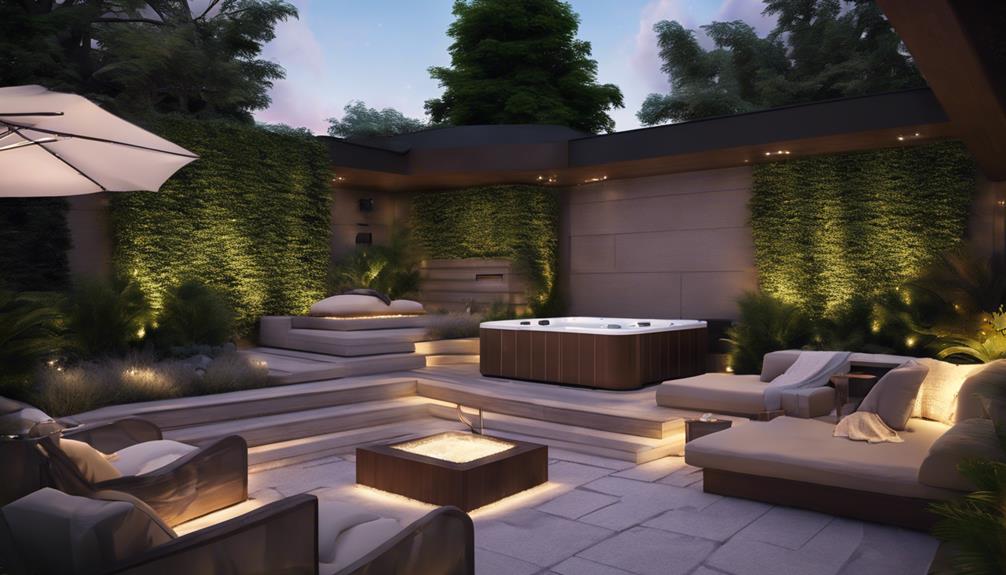
As we explore the realm of luxurious spa backyard design, we stumble upon a realm of tranquility and indulgence where every element is meticulously curated for ultimate relaxation.
Picture this – a serene oasis right in your backyard, where the stresses of the day melt away effortlessly.
But how does one transform a simple outdoor space into a lavish spa retreat that rivals those of high-end resorts?
Let's uncover the secrets to crafting a truly opulent sanctuary where you can unwind and rejuvenate in style.
Key Takeaways
- Incorporate hot tubs, ambient lighting, and comfortable seating for a luxurious spa experience.
- Enhance the ambiance with decorative fountains, lush greenery, and colorful flowers.
- Create cozy spaces with plush seating, string lights, and a fire pit for warmth.
- Ensure privacy and relaxation through wooden structures, privacy screens, and trellises.
Spa Backyard Design Elements
In crafting our luxurious spa backyard design, we infuse it with a symphony of elements that tantalize the senses and transport us to a sanctuary of relaxation and rejuvenation. Our outdoor space is adorned with the finest features, including soothing hot tubs that beckon us to unwind after a long day. To ensure privacy, we strategically place privacy screens around the spa area, offering a secluded oasis where we can fully immerse ourselves in the natural beauty that surrounds us.
Ambient lighting casts a gentle glow, creating a serene ambiance that invites us to linger and enjoy the peaceful atmosphere. Comfortable seating provides the perfect spot to lounge and soak in the tranquility of our spa retreat. Water elements such as fountains and waterfalls add a touch of elegance and tranquility to the space, further enhancing the overall sense of relaxation.
For those sunny days, shading options like pergolas or umbrellas offer protection from harsh UV rays, allowing us to bask in the beauty of our outdoor sanctuary without worry. With these elements harmoniously combined, our spa backyard design is a true haven for rest and rejuvenation.
Water Features and Plantings
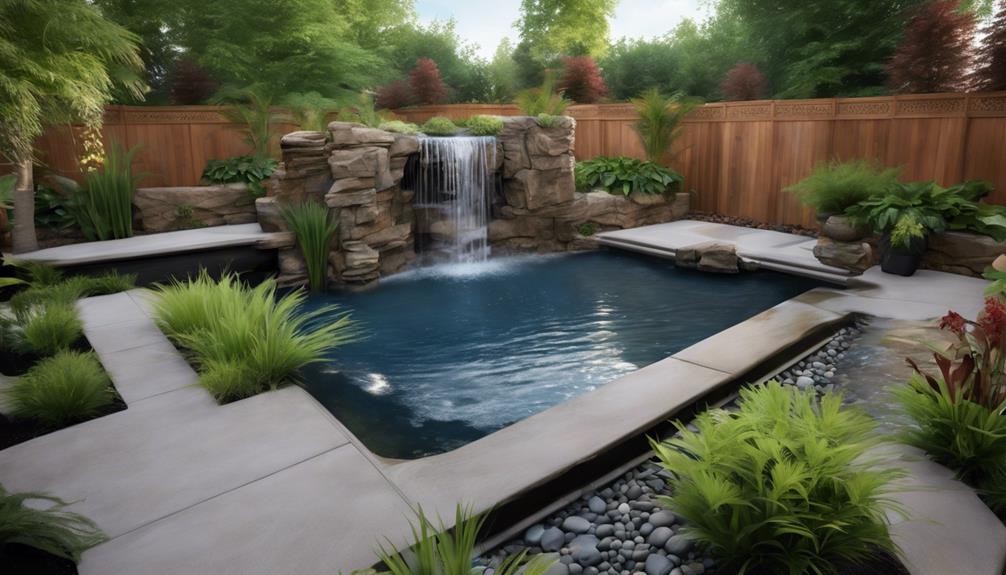
As we continue to shape our luxurious spa backyard design, the integration of captivating water features and vibrant plantings emerges as a pivotal element in creating a sensory oasis of tranquility and natural beauty. Incorporating water features like decorative fountains or soothing ponds adds a touch of elegance and relaxation to the space. Picture a graceful fountain gently bubbling in the corner, its soothing sounds harmonizing with the rustling of leaves in the breeze.
Surrounding the spa with lush greenery, colorful flowers, and fragrant herbs enhances the overall ambiance, appealing to all senses. Imagine vibrant blooms bursting with hues of pink, purple, and white, their sweet scents wafting through the air, inviting you to unwind and breathe in the tranquility of nature. The trickling water from the features creates a serene soundtrack, drowning out the noise of the outside world and enveloping you in a cocoon of peace.
Strategic plantings not only provide privacy and seclusion but also contribute to the beauty of the space, ensuring that every corner exudes luxury and comfort.
Cozy Seating and Lighting
Nestling ourselves into the lap of comfort, we cocoon the spa backyard with cozy seating options and soft, ambient lighting fixtures to elevate our relaxation experience. Plush lounge chairs beckon us to unwind, while hammocks sway gently in the breeze, offering a serene spot for contemplation. The strategic placement of these seating options encourages intimate conversations and social gatherings, fostering a sense of community within the tranquil space.
| Seating Options | Lighting Fixtures | Natural Elements |
|---|---|---|
| Plush lounge chairs | String lights | Candles |
| Hammocks | Lanterns | Torches |
| Outdoor sofas | Dimmable lamps | Fire pit |
Privacy and Relaxation Tips
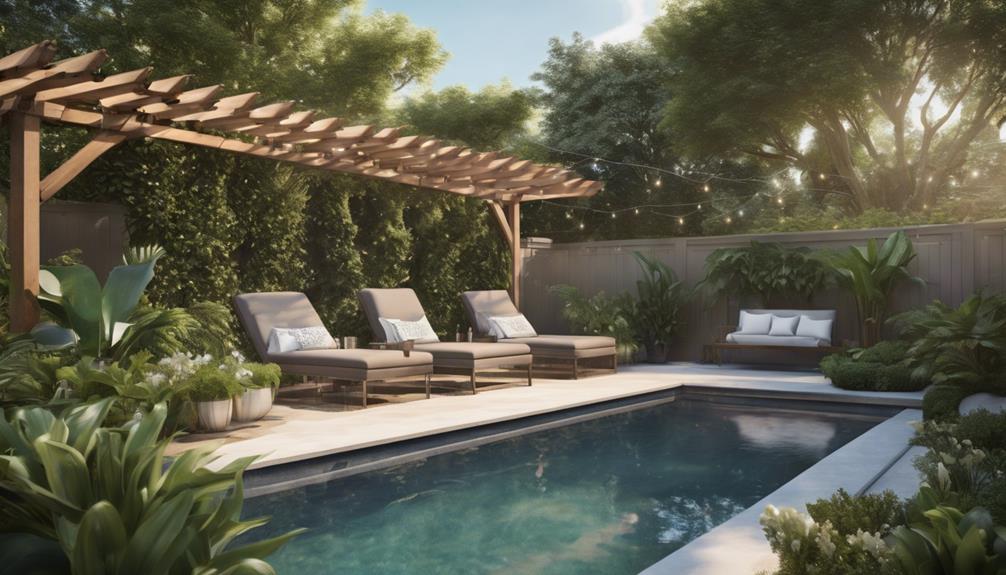
Creating a secluded sanctuary for ultimate relaxation and privacy in your spa backyard involves strategic placement of features and structures to enhance your tranquil oasis. Here are three privacy and relaxation tips to help you create the perfect spa retreat:
- Privacy Structure: Build a wooden privacy structure around your hot tub to create a cozy atmosphere and shield it from prying eyes. This enclosed space will make you feel like you're in your private sanctuary, away from the outside world.
- Arbor: Enhance privacy and add a touch of elegance to your spa oasis by installing an arbor over the hot tub area. The arbor not only provides shade and seclusion but also adds a charming aesthetic to your backyard design, perfect for creating a soothing ambiance.
- Privacy Screens: Incorporate privacy screens, trellises, or pergolas around your spa area to further enhance the sense of seclusion and tranquility. These structures not only offer privacy but also create a serene environment where you can unwind and rejuvenate in peace.
Maintenance and Enjoyment Tips
How can we enhance our spa experience through both maintenance and enjoyment practices? Ensuring proper maintenance is essential for a luxurious spa experience. This involves regular water care and component upkeep following the manufacturer's guidelines to prolong the lifespan of your spa. Advanced control panels allow for customization, letting you adjust jets, lighting, and sound systems to tailor your spa experience to your preferences. When it comes to installation, seeking professional assistance for electrical and plumbing requirements is crucial for safety and optimal setup.
To further elevate your spa enjoyment, incorporate relaxation techniques such as deep breathing exercises or mindfulness practices while soaking in the soothing waters. Enhance the ambiance with calming music and aromatherapy using essential oils known for their relaxing properties. By combining proper maintenance with relaxation techniques, you can create a spa oasis in your backyard that promotes both physical well-being and mental relaxation.
| Maintenance | Enjoyment |
|---|---|
| Regular water care | Relaxation techniques |
| Component upkeep | Soothing music |
| Control panels | Aromatherapy |
| Professional assistance | Mindfulness practices |
Frequently Asked Questions
How to Design a Backyard With a Hot Tub?
So, we position the hot tub amidst lush greenery and water features for a serene vibe. Surround it with privacy screens, add ambient lighting, comfy seating, and water elements. It creates a luxurious spa-like retreat in our backyard.
How Do I Make My Hot Tub Look Classy?
To make our hot tub look classy, we choose sleek, modern design elements like stainless steel jets and LED lighting. High-quality materials such as teak wood and natural stone elevate the appearance. Adding a custom-built pergola or gazebo enhances the chic setting.
How Much Does It Cost to Build an Outdoor Spa?
Building an outdoor spa can range from $3,000 to $30,000+. Costs vary based on size, features, and materials. Factors like spa type, installation needs, lighting, and landscaping influence prices. Luxury options with customization can go beyond $20,000.
How Do You Build an Outdoor Spa?
We start by selecting a suitable location, ensuring utility access. The spa's size and shape must fit well and complement our backyard. A sturdy foundation, plumbing, and electrical connections are crucial. Insulation and sealing maintain energy efficiency and protect from elements.
Conclusion
In creating a luxurious spa backyard design, we must consider the perfect balance of water features, plantings, cozy seating, and lighting.
Privacy and relaxation tips are essential for a tranquil retreat. By incorporating maintenance and enjoyment tips, we can ensure our spa oasis remains a haven of relaxation for years to come.
Let's immerse ourselves in the soothing ambiance of our spa backyard and indulge in moments of pure bliss and rejuvenation.
- About the Author
- Latest Posts
Introducing Ron, the home decor aficionado at ByRetreat, whose passion for creating beautiful and inviting spaces is at the heart of his work. With his deep knowledge of home decor and his innate sense of style, Ron brings a wealth of expertise and a keen eye for detail to the ByRetreat team.
Ron’s love for home decor goes beyond aesthetics; he understands that our surroundings play a significant role in our overall well-being and productivity. With this in mind, Ron is dedicated to transforming remote workspaces into havens of comfort, functionality, and beauty.
Spa Design
Creating a Stylish Spa Uniform Design Guide
Unveil the secrets to crafting chic spa uniforms that redefine elegance and professionalism – discover the ultimate guide here!
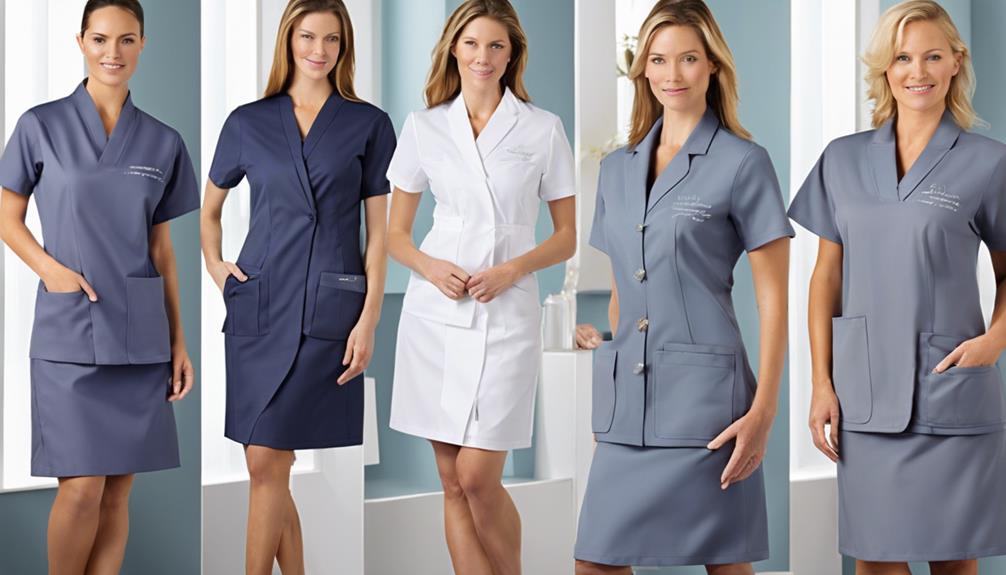
Let's face it – spa uniforms are often overlooked in the world of fashion, but why settle for the mundane when you can elevate your spa's style game effortlessly?
With a meticulous focus on fabric choices, color schemes, trendy accents, and practical functionalities, the art of crafting a stylish spa uniform design guide opens up a realm of possibilities.
But what key elements truly define a standout spa uniform design? Let's explore how attention to detail and a touch of creativity can transform the way spa professionals present themselves, setting a new standard in the industry.
Key Takeaways
- Prioritize comfort and breathability with materials like Bi-Stretch and cotton.
- Infuse modern flair with bold colors and subtle pops for sophistication.
- Incorporate unique style elements like interesting necklines and stylish buttoning.
- Opt for functional features like moisture-wicking fabrics and multiple pockets for convenience.
Fabric Selection
When crafting stylish spa uniforms, we prioritize fabric selection to ensure comfort, breathability, and durability for spa professionals in diverse environments. Our goal is to create uniforms that not only look great but also feel great to wear throughout long shifts.
For spa environments, where professionals are constantly on the move, we opt for materials like Bi-Stretch, Trevor, polyester, nylon, or polyurethane that offer flexibility and ease of movement. In warmer climates, breathability becomes crucial, leading us to choose fabrics like cotton and linen that help regulate body temperature and wick away moisture.
The absorbent properties of cotton, which can absorb up to 27 times its weight in moisture, and linen, which can absorb up to 20 times its weight, make them ideal choices for spa uniforms. Additionally, we focus on lightweight yet durable materials that can withstand the demands of daily wear in a spa setting while providing the functionality and comfort spa professionals need to excel in their roles.
Color Palette
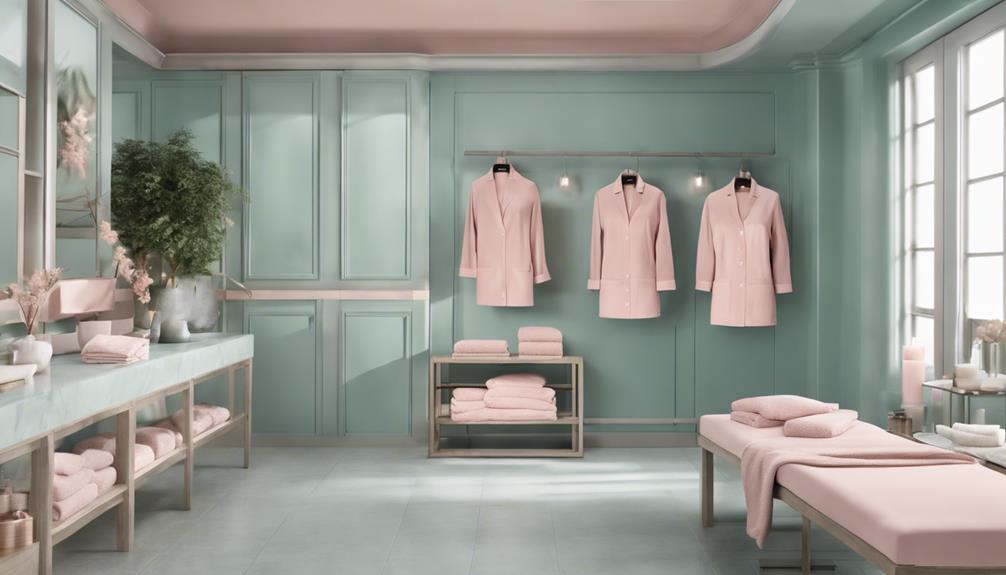
Exploring a vibrant and chic color palette is essential to infuse modern flair into spa uniforms, elevating their aesthetic appeal and making a bold statement in the beauty industry. When selecting colors for your spa uniforms, consider opting for bold and fashionable hues like red or cobalt blue to ensure your staff stands out. These primary colors are not only on-trend but also exude a contemporary and stylish look that resonates with clients seeking a cutting-edge spa experience. To add a touch of sophistication, incorporate subtle pops of color, such as a bright trim on a black tunic, which can elevate the overall design. Experimenting with different color combinations, as suggested by industry expert Noel Asmar, allows you to create unique and eye-catching effects that set your spa uniforms apart. Use color strategically to either make a dramatic statement or add a subtle touch, enhancing the appeal of your beauty uniforms and reinforcing your brand's image.
| Bold Red | Cobalt Blue | Bright Trim |
|---|---|---|
| Modern | Fashionable | Sophisticated |
| Trendy | Eye-catching | Unique |
Style Elements
To infuse a touch of elegance and sophistication into spa uniforms, we focus on incorporating captivating style elements that elevate the overall aesthetic appeal and create a lasting impression.
When it comes to designing spa tunics, consider incorporating interesting necklines like square or V-neck designs to add a modern twist. Experiment with wraps, ruffles, or asymmetrical elements for a unique and chic look that sets your spa uniform apart. These asymmetrical details can create a dynamic and eye-catching silhouette that exudes trendiness.
Moreover, focusing on small yet impactful details such as stylish buttoning can elevate the overall design, making it memorable and fashionable. To further enhance the visual appeal, opt for contrasting materials and colors that create a striking effect.
Functional Features
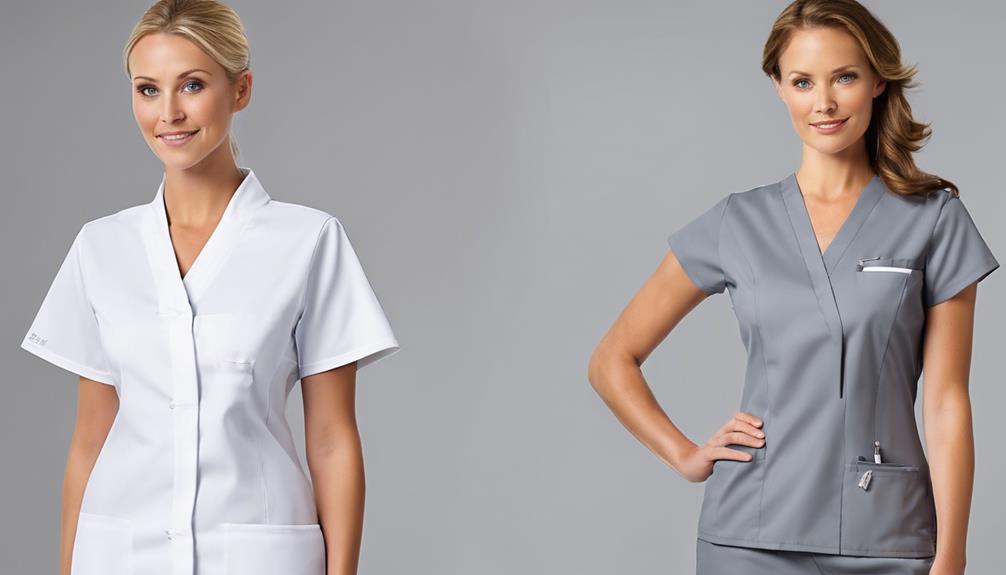
Incorporating moisture-wicking fabrics in spa uniforms ensures comfort and functionality during extended shifts. When it comes to functional features, spa professionals require garments that not only look stylish but also enhance their performance. Here are three key elements to consider for spa uniform design:
- Breathable Fabrics: Opt for materials that promote airflow and allow the skin to breathe, keeping spa professionals cool and comfortable throughout the day. Breathable fabrics help in regulating body temperature, preventing overheating during demanding treatments.
- Multiple Pockets: Designs with multiple pockets provide convenient storage for essential tools and products, ensuring that spa professionals have easy access to everything they need without disrupting their workflow. This feature adds practicality to the uniform, allowing for efficient service delivery.
- Flexibility with Side Slits: Tunics with side slits offer ease of movement and flexibility, allowing spa professionals to perform treatments with agility and comfort. The side slits not only enhance mobility but also add a touch of modernity to the uniform design.
Branding and Accessories
Let's elevate the allure and professionalism of spa uniforms through strategic branding and chic accessories that embody the essence of sophistication and expertise. Professional accessories are essential in creating a cohesive and polished look for beauty professionals. By incorporating logo badges, aesthetic buttons, and personalized jewelry, spa uniforms can exude a sense of identity and professionalism that aligns with the overall brand image and interior decor. These accessories not only add a touch of individuality but also serve as a representation of expertise and skills, contributing to a professional appearance that instills confidence in clients.
To visualize the impact of professional accessories, consider the following table:
| Accessory Type | Description |
|---|---|
| Logo Badges | Enhance identity and professionalism |
| Aesthetic Buttons | Add a touch of sophistication |
| Personalized Jewelry | Reflect individual style |
| Necklaces/Bracelets | Infuse uniqueness into the uniform |
Incorporating these elements into spa uniforms elevates the overall aesthetic and expert look, setting a high standard for the industry.
Frequently Asked Questions
What Is the Best Material for a Spa Uniform?
For a spa uniform, the best material combines comfort and durability. Think soft linen blends for breathability and Bi-Stretch or polyester for flexibility. Prioritize fabrics like cotton or linen for warm climates' absorbent properties. Quality matters.
How to Design My Uniform?
Let's infuse your uniform design with luxurious linen blends for breathability. Add flair with unique necklines and button styles. Opt for modern square or V-neck tunics that flatter all body types. Experiment with wraps, ruffles, and asymmetry for trendy spa uniforms.
Conclusion
In the end, we thought we'd it all – the perfect fabrics, the trendiest colors, the most stylish designs.
But as we strutted in our spa uniforms, we realized something was missing. Maybe it was the unexpected pop of neon or the quirky accessory we forgot.
Sometimes, perfection lies in imperfection, and it's the little quirks that truly make us stand out.
So, here's to embracing the unexpected and finding beauty in the flaws.
- About the Author
- Latest Posts
Introducing Ron, the home decor aficionado at ByRetreat, whose passion for creating beautiful and inviting spaces is at the heart of his work. With his deep knowledge of home decor and his innate sense of style, Ron brings a wealth of expertise and a keen eye for detail to the ByRetreat team.
Ron’s love for home decor goes beyond aesthetics; he understands that our surroundings play a significant role in our overall well-being and productivity. With this in mind, Ron is dedicated to transforming remote workspaces into havens of comfort, functionality, and beauty.
Retreat Ideas
Creative Corporate Retreat Gift Bag Ideas
Lure your attendees into a world of wonder with our imaginative corporate retreat gift bag ideas, each holding a special surprise in store.
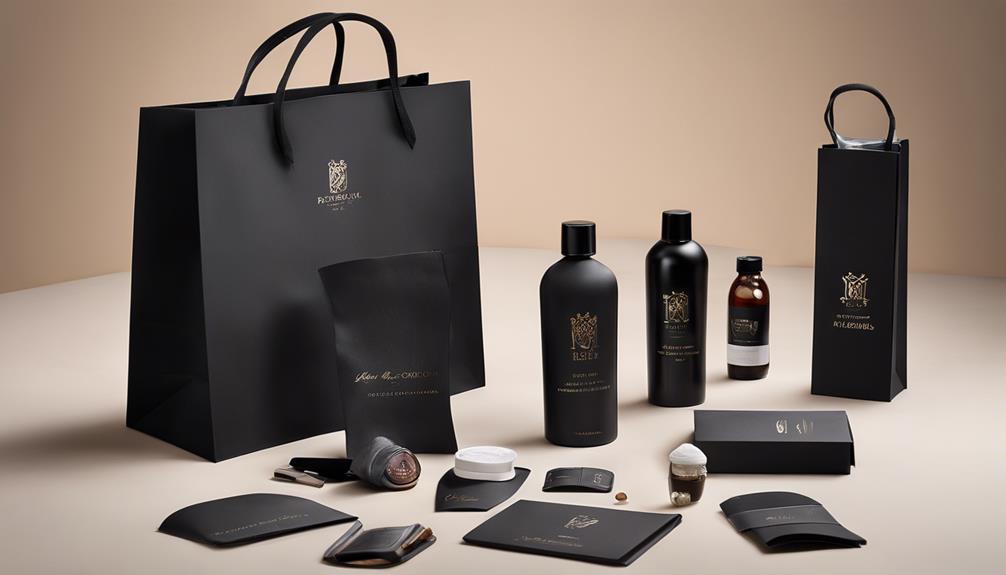
Imagine stepping into a forest and discovering a treasure trove of surprises waiting at every turn. That's the essence of what we aim to achieve with our curated selection of corporate retreat gift bag ideas.
From personalized tech accessories to eco-friendly swag items, our suggestions are designed to elevate the experience for attendees and create lasting impressions.
Explore how these thoughtful touches can transform your corporate retreat gift bags into meaningful tokens that reflect the spirit of your event.
Key Takeaways
- Personalized tech accessories and branded utility items enhance corporate retreat gift bags.
- Locally sourced treats reflect the retreat location and support local businesses.
- Customized wellness products promote relaxation and well-being among participants.
- Eco-friendly swag items and sustainability-themed gifts reduce waste and support environmental consciousness.
Personalized Tech Accessories
When curating the ultimate corporate retreat gift bags, we infuse personalized tech accessories to seamlessly blend practicality with a touch of individuality. Our selection includes a range of branded items like custom smartphone cases, engraved USB drives, and personalized tech organizers, all adorned with the company logo to promote brand visibility. These modern and functional gifts cater to the tech-savvy needs of retreat attendees, offering not only a personalized touch but also enhancing their overall experience.
For a company looking to provide a memorable gift, custom Bluetooth earbuds, branded power banks, and personalized pop sockets are practical options that demonstrate thoughtfulness. Incorporating employee names or company mottos on tech accessories fosters a sense of ownership among recipients. From custom wireless chargers to engraved stylus pens, each item serves a purpose while adding a stylish flair to the gift bag. These personalized tech accessories aren't just gifts; they're tools that reflect the company's commitment to innovation and excellence.
Locally Sourced Treats

Elevating our corporate retreat gift bags to embody the essence of the retreat location, we introduce a delectable array of locally sourced treats that promise a flavorful journey through the region's culinary delights. Including artisanal chocolates, gourmet snacks, and specialty jams, these locally sourced treats offer a unique and authentic taste of the region, supporting local businesses and farmers while guaranteeing the community's economy and sustainability.
Our customized selection secures each gift bag reflects the flavors and specialties of the retreat location, adding a personal touch and cultural experience for each participant. By incorporating these locally sourced treats, we not only offer a delightful culinary experience but also showcase the diverse and rich food culture of the area.
From the rich cocoa notes of the artisanal chocolates to the savory crunch of gourmet snacks and the sweet tang of specialty jams, our gift bags are curated to provide a one-of-a-kind taste sensation that captures the essence of the retreat location.
Customized Wellness Products
Embracing the essence of relaxation and self-care at our corporate retreat, we curate gift bags filled with customized wellness products designed to enhance our participants' well-being and promote a sense of calm.
Our selection of wellness products includes:
- Aromatherapy Masks: Infused with calming scents, these masks help soothe the mind and body, perfect for unwinding after a long day of activities.
- Soothing Eye Pillows: These pillows provide gentle pressure and subtle aromatherapy to relieve tension and promote relaxation during moments of rest and reflection.
- Relaxation-Promoting Meditation Crystals: Each crystal is chosen for its calming properties, encouraging mindfulness and tranquility in daily practices.
In addition to these thoughtful items, we also include personalized water bottles, tote bags, and yoga accessories to support our participants' commitment to a healthy lifestyle. By offering practical and wellness-focused gifts, we aim to show appreciation for our employees' dedication while fostering a balanced and rejuvenating retreat experience.
Eco-Friendly Swag Items
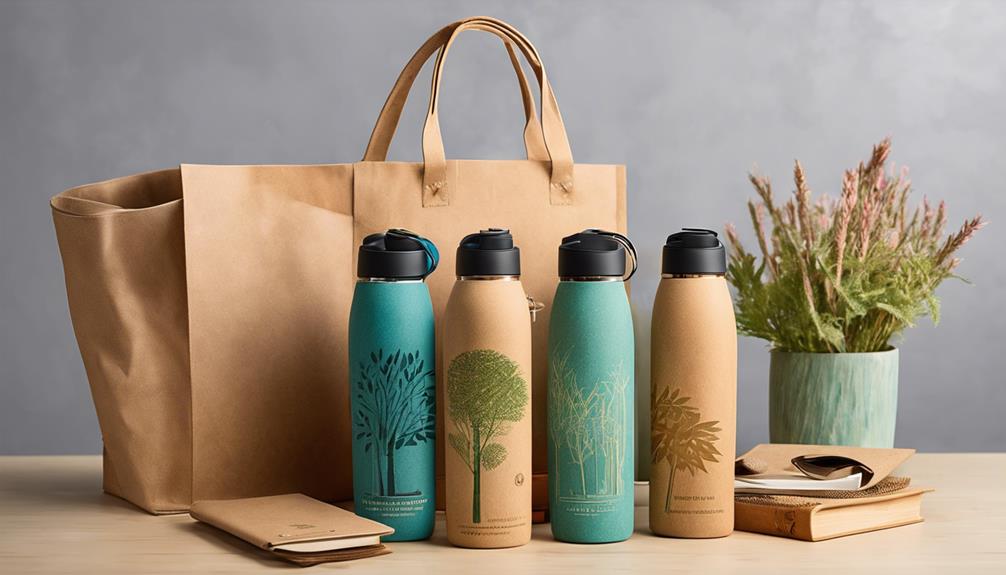
Our commitment to sustainability shines through in the eco-friendly swag items carefully selected for our corporate retreat gift bags. By including reusable straws, we aim to foster eco-consciousness among attendees, encouraging them to make simple yet impactful changes in their daily routines. Plant-growing kits in canning jars not only offer a unique gift option but also symbolize growth and sustainability, inspiring participants to nurture both plants and a sense of environmental responsibility.
Moreover, providing reusable water bottles promotes waste reduction and supports eco-friendly practices during the retreat. These bottles serve as a reminder of the importance of reducing single-use plastics and embracing reusable alternatives. Additionally, eco-friendly bags included in the gift bags contribute to a more sustainable event experience, emphasizing our dedication to minimizing waste and promoting eco-conscious choices.
Together, these green gift options create a cohesive theme of sustainability, ensuring that our corporate retreat aligns with environmentally friendly principles and offers attendees a truly sustainable experience.
Innovative Team-Building Tools
To amplify the collaborative spirit at our corporate retreat, we infuse the gift bags with innovative team-building tools designed to energize and unite participants through engaging activities. Our selection includes:
- Custom Puzzles: These intricate puzzles not only challenge the mind but also promote teamwork as participants work together to solve them.
- Escape Room Kits: Transform any space into an escape room adventure, fostering problem-solving skills and encouraging cooperation among team members.
- Trivia Games: Fun and informative, these games spark friendly competition while enhancing communication and collaboration within the group.
Frequently Asked Questions
What Do You Put in a Gift Bag?
In a gift bag, we include items tailored to the recipient's preferences, creating a personalized experience. Our selection ranges from branded merchandise to eco-friendly options, wellness products, tech gadgets, and luxurious gifts, ensuring a memorable and impactful presentation.
What Is Another Name for a Staff Retreat?
Another term for a staff retreat is a team offsite. It's a designated time for us to step away, focus on team building, and enhance our collaboration skills. These retreats foster creativity, boost morale, and improve communication.
Conclusion
Just as each gift bag at a corporate retreat is carefully curated to enhance the experience for attendees, so too must we approach our own personal growth and development.
Like the contents of the gift bags, our journey is filled with personalized tech accessories, locally sourced treats, customized wellness products, eco-friendly swag items, and innovative team-building tools.
Let's embrace the creativity and thoughtfulness that goes into creating these gift bags and apply it to our own lives as we aim for growth and success.
- About the Author
- Latest Posts
Introducing Ron, the home decor aficionado at ByRetreat, whose passion for creating beautiful and inviting spaces is at the heart of his work. With his deep knowledge of home decor and his innate sense of style, Ron brings a wealth of expertise and a keen eye for detail to the ByRetreat team.
Ron’s love for home decor goes beyond aesthetics; he understands that our surroundings play a significant role in our overall well-being and productivity. With this in mind, Ron is dedicated to transforming remote workspaces into havens of comfort, functionality, and beauty.
-
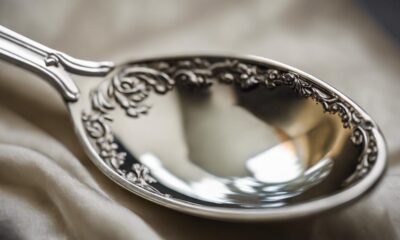
 Vetted1 hour ago
Vetted1 hour ago15 Best Silver Polish Brands to Make Your Silver Shine Like New
-
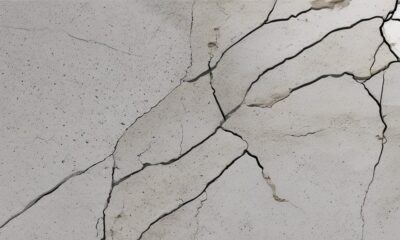
 Vetted5 days ago
Vetted5 days ago15 Best Fillers for Concrete Cracks – Expert Recommendations and Reviews
-

 Vetted1 week ago
Vetted1 week ago15 Best Plants for Large Pots to Transform Your Outdoor Space
-

 Vetted6 days ago
Vetted6 days ago15 Best Fairy Lights to Transform Your Space With Magical Illumination
-

 Vetted1 week ago
Vetted1 week ago15 Best Folding Beds for Small Spaces – Space-Saving Solutions for Comfort and Convenience
-
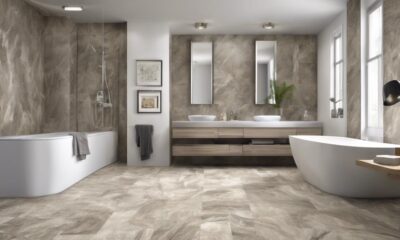
 Vetted1 week ago
Vetted1 week ago15 Best Waterproof Flooring Options for Your Bathroom – Ultimate Guide & Reviews
-

 Vetted2 weeks ago
Vetted2 weeks ago15 Best Grocery Carts to Make Shopping a Breeze
-

 Vetted1 day ago
Vetted1 day ago15 Best Subfloor Options for Your Basement Renovation – Ultimate Guide











